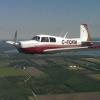Sunset Formation flight
-
Members Online
- Ragsf15e
- ArtVandelay
- Scottknoll
- 201er
- 00-Negative
- exM20K
- Rick Junkin
- fmg85
- katzhome
- carusoam
- bhtitle
- MoonFlyer68
- IvanP
- Fly Boomer
- CCAS
- N201MKTurbo
- Planegary
- Ive
- CCowboy
- peterl
- atpdave
- bluehighwayflyer
- Jeff Dennerline
- Shadrach
- tbone40x
- StevenL757
- Grant_Waite
- M20E for me
- LANCECASPER
- eman1200
- richardbrochu27
- GeeBee
- ElkoRandy20J


Recommended Posts
Join the conversation
You can post now and register later. If you have an account, sign in now to post with your account.